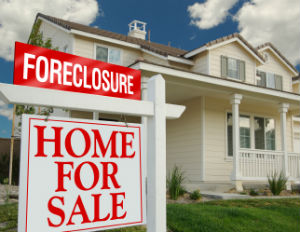Home ownership is often heralded as the “American Dream.” It is also the single largest investment that most people will make in our lifetimes. The balance is often so careful and deliberate that when life happens – be it from death, divorce, job loss, unanticipated weather events, just plain bad luck – we are sometimes faced with losing our investment. Many well-meaning people lose hope when they face that this substantial loss.
The Covid-19 pandemic caused many honest people to struggle with their mortgages and keeping their American dream alive. On October 11, 2019, my esteemed colleague, and firm partner at Mooney Law, Mark Buterbaugh, wrote an article asking: “Can An Emergency Bankruptcy Filing Stop Mortgage Foreclosure On My Home?” which touched upon emergency bankruptcy petitions and how the benefit of the automatic stay in bankruptcy can stop an imminent mortgage foreclosure. I agree with Attorney Buterbaugh’s thoughts. Unfortunately, the myriad of mortgage foreclosure moratoriums and consumer protections put in place during the Covid-19 pandemic are beginning to wane, and so my article seeks to provide information for those struggling with their mortgages and help them formulate a plan.
The law underpinning real property ownership and foreclosures is complex. Let’s define some terms and ground ourselves in basic concepts before diving in. A “mortgage” is the legal device which transfers an interest in land as security for the lender who makes a loan. Most often, that loan is used as purchase money for the property. A “security interest” is a legal right – granted by the borrower and to the lender – over the borrower’s property. “Collateral” is the term that describes the borrower’s property used as security by the lender. “Foreclosure” is the lender’s act of taking possession of the mortgaged property when the borrower fails to keep up with their mortgage payments. Foreclosure comes in two distinct forms. In Pennsylvania, foreclosures are “judicial” proceedings wherein the foreclosing party (the lender) files a lawsuit in the local court to obtain possession. In Maryland, by contrast, foreclosure proceedings are “non-judicial” where the foreclosing party (the lender) follows a set of state-specific out-of-court procedures that must be approved by the local court. In both cases, the lender will seek to take possession of your home and sell it at an auction to satisfy the full balance owed on your mortgage. In many cases, the sale will create a “deficiency” – the difference between what the property sold for and what you owed on the contract – which the lender will then pursue you to collect. Many folks find themselves scared and overwhelmed by the foreclosure process. What are the options for folks who face potential foreclosures? Excellent question.
The main protections for borrowers come from federal mortgage servicing laws. A detailed discussion of those laws is outside the scope of this article. In a nutshell, mortgage lenders and mortgage servicers are required to help delinquent borrowers with what is called “loss mitigation”. These are steps that mortgage lenders and servicers must take to help borrowers avoid foreclosure. These options may include:
- “Deed-In-Lieu of Foreclosure” is a voluntary agreement between the lender and the borrower to turn over the property to the lender instead of proceeding with a formal foreclosure;
- “Forbearance(s)” is when a lender allows a borrower to pause or reduce payments on their mortgage for a set period of time (six months, for example). The payments are not erased or forgiven and the missed payments will have to be resolved in the future. Resolution can be a lump-sum or “balloon” payment or even include a mortgage modification; and
- “Mortgage Modification” is often offered as an option to entice borrowers to accept a forbearance and involves an agreement between the lender and the borrower to modify the original terms of the contract to resolve the past-due balance. Often, mortgage modifications will involve extending the repayment period for the loan to include the missed payments or structuring an entirely separate loan.
Pursuant to federal law, in most cases, when a borrower is forty-five days delinquent, the mortgage lender or servicer is required to offer loss mitigation options in writing and over-the-phone. The lender must have dedicated personnel to assist with understanding the loss mitigation programs, advise borrowers on how to complete and submit a loss mitigation application, report on the status of the borrower’s application, advise how borrowers may appeal an adverse determination on their application, and the explain circumstances when the lender will pursue foreclosure.
The Covid-19 pandemic ushered in new limited-time protections for struggling borrowers as well. The first among these protections came from the CARES Act, passed in March of 2020. The CARES Act guaranteed two protections. First, any borrower would be granted a 180-day forbearance on their mortgage payments if they attested to a financial hardship due to the Covid-19 pandemic. Second, the law provided for a sixty-day moratorium on mortgage foreclosures for federally-issued or federally-insured mortgages. Those included mortgages issued or insured by Fannie Mae or Freddie Mac, the Departments of Agriculture, Housing and Urban Development, and Veteran’s Affairs. These protections were extended, several times, by Executive Order, through July 31, 2021 and functionally stopped foreclosures for a large swath of homeowners. Following on the heels of the CARES Act extensions, an administrative rule by the Consumer Financial Protection Bureau enacted more safeguards for the period between August 31, 2021 through December 31, 2021 that prevented lenders from starting a foreclosure proceeding unless the borrower is more than 120 days delinquent on the mortgage and one of the following is true: the borrower has abandoned the property, the borrower has not responded to outreach attempts for more than ninety days, or the borrower’s loss mitigation application was denied. In addition to the moratorium on federally-backed mortgage foreclosures, these powerful safeguards no doubt assisted many borrowers to remain in their homes during the grips of the Covid-19 pandemic. As of the date of writing, all these protections have also lapsed and lenders are once again able to pursue foreclosures. Struggling borrowers are beginning to feel the squeeze.
One very common question from my clients is “what are my alternatives to foreclosure?” Great question. The first option is to “redeem” the property. This a right that you have as a borrower to reclaim the property if you pay the full balance owed to the lender. Short of an unanticipated windfall, this option is unlikely for borrowers who struggled to make the mortgage payment in the first instance. The second option is to take advantage of the mitigation options I discussed above. What happens when the mitigation options go sideways or the lender otherwise refuses to negotiate? The final, and often best, option is to file for Chapter 13 Bankruptcy protection. When all else has failed and the mortgage lender has rejected your application for mitigation or you are facing an imminent foreclosure and loss of your investment, Chapter 13 bankruptcy will help to structure a repayment plan to allow you to stay in your home, cure any delinquent balance, make your monthly mortgage payment, and resolve other outstanding debts.
Foreclosures are immensely stressful, especially when compounded by the financial havoc of the Covid-19 pandemic. As the consumer protections wear off, if you or a loved one are facing a possible foreclosure, the experienced, proven, and trusted bankruptcy attorneys at Mooney Law stand ready to assist you and answer your questions. Consultations for bankruptcy are always free at Mooney Law. To schedule a FREE consultation, call us today at 833-MOONEYLAW or at 717-200-HELP. You can also visit the firm website at https://www.mooney4law.com.



